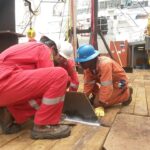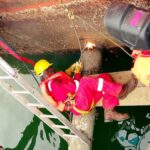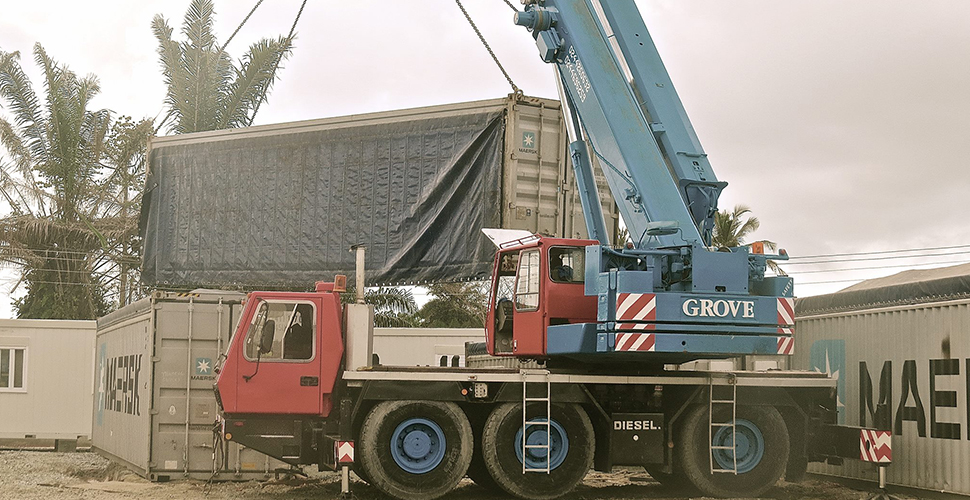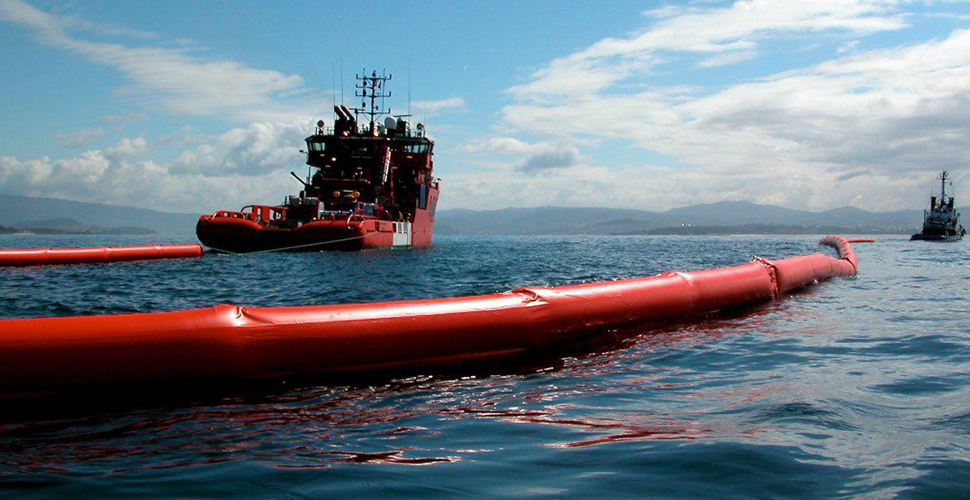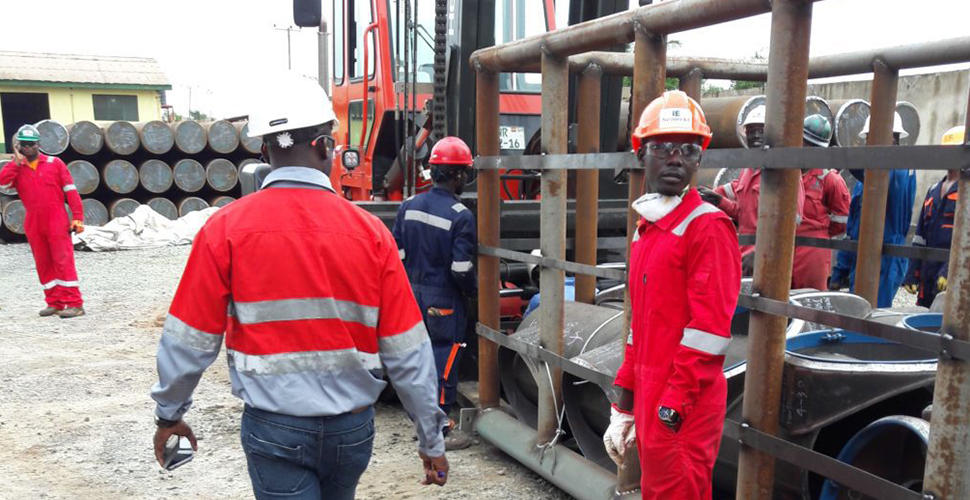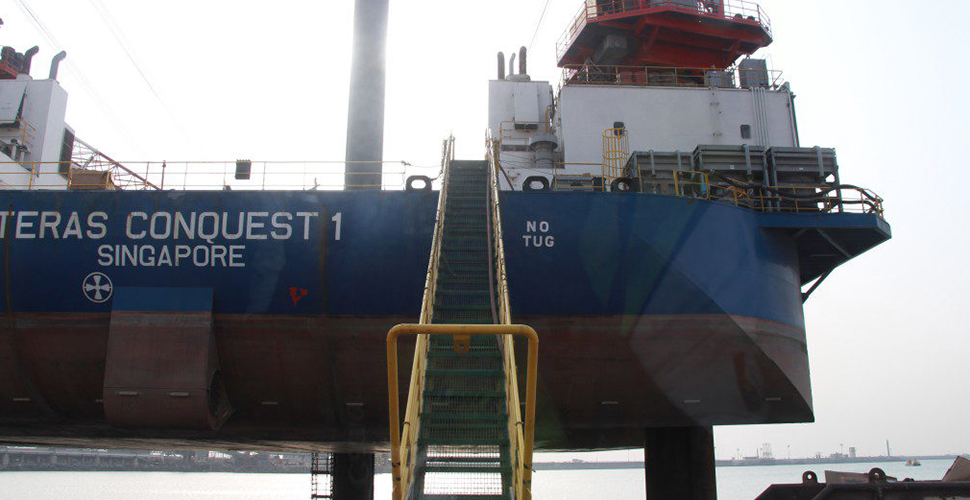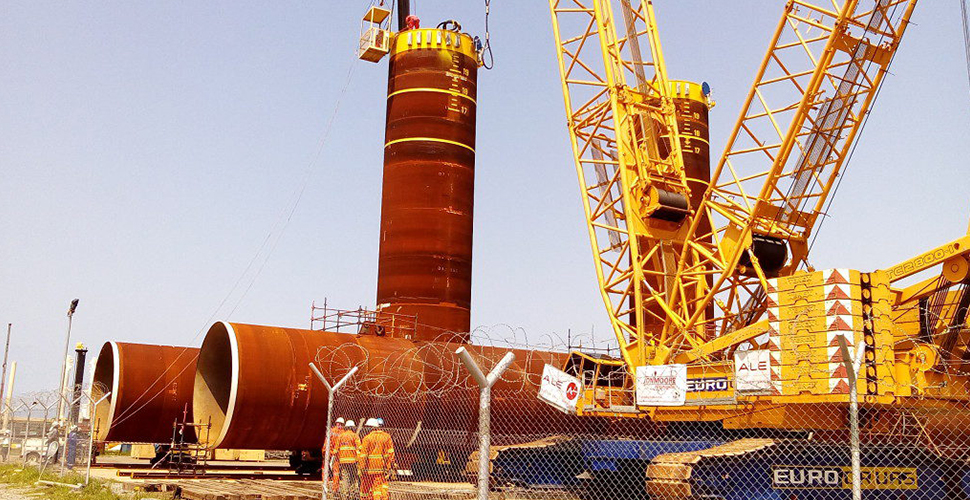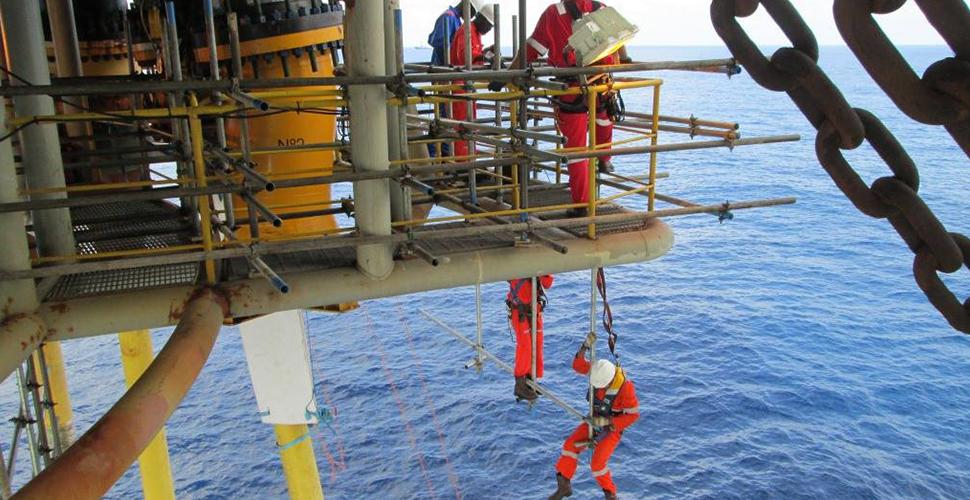Seaweld Engineering was recently contracted by MODEC Ghana to seafasten nine suction piles constructed by Group Five onto the LAMNALCO.1 barge. The suction piles will be transported and installed on a supply vessel, NORMAND INSTALLER by EMAS to the TEN Oil filed.
Seafastening of the suction piles included the fabrication of 114pcs of H-beams (1920mm of short H-beams and 3760mm of long H-beams); 472pcs of stiffeners; and welding of 88pcs of stoppers. The height of the suction pile was 21m with a diameter of 4.5m and a weight of 123 MT (Metric Tons).
The project took place at the Sekondi Naval Base from May 12 2015 and took approximately 21 days for phases 1 & 2 to be completed. Our expert welders, fabricators, safety officers, MPI certified technicians and project engineers worked day and night to ensure the project was completed on time, on budget and to client satisfaction. The project passed all quality tests.

The cutting of stoppers and stiffeners was done at our workshop at Beahu, with the use of our oxygen acetylene to cut the steel plates. After all cutting was done, the welders then grind the cut out plate to make it smooth for welding.
Our well experienced welders used the tack welding process to hold the stiffeners to the H-beams Together. Our fabricators marked out the barge where the short and long H-beams will be placed depending on the client’s drawings.
All alignments are checked before full welding of the H-beams are welded on to the barge according to the weld lengths given by the client. MPI was conducted on every weld to ensure they met international standards.
Suction piles are used under water by the oil and gas industry to support floating vessels such as rigs and oil platforms.
The term suction refers to the method of installation, which implies sucking out the water entrapped in the pile once it has been penetrated into the seabed under its self-weight, in order to drive it down to its design penetration.
It is an open and closed tube, opened at the bottom and closed at the top. Suction piles design differs from various deep sea. The suction pile design for the Gulf of Mexico will be different from the one designed for the Gulf of Guinea due to the nature of different sea-beds


